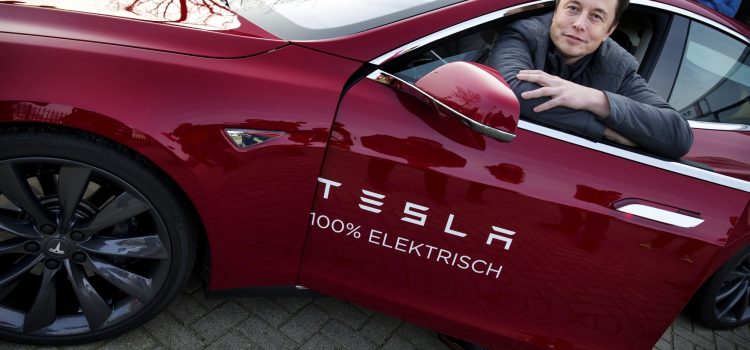
Introduction
Tesla’s rapid growth relies on a stable, cost-effective supply of battery materials. Recently, Tesla placed a $2.9 billion order with L&F, a leading producer of cathode active materials. This deal not only locks in crucial components for Tesla’s next generation of electric vehicles but also signals a shift toward long-term partnerships that shield both carmakers and suppliers from market swings. In this article, we’ll explore why this order matters, how it secures Tesla’s supply chain, and what it means for the future of EV production.
The Importance of Battery Materials in Electric Vehicles
1. Key Role of Cathode Materials
- Energy Density: Cathode active materials determine how much energy a battery holds per kilogram. Higher density means longer driving range.
- Cost Driver: Materials like nickel, cobalt, and manganese account for up to 40% of battery cell costs.
- Performance and Safety: Quality cathodes improve charging speed, lifespan, and thermal stability.
2. Tesla’s Growth Demands
- Expanding Gigafactories: Tesla’s plants in Nevada, Shanghai, Berlin, and Texas target a combined capacity of over 3 TWh by 2030.
- Model Lineup Expansion: From the Model Y to the Cybertruck, Tesla’s diverse range requires consistent supply of tailored battery chemistries.
Securing cathode materials is thus essential for Tesla to meet production targets and maintain its competitive edge.
Who Is L&F? A Snapshot of the Supplier
1. Company Background
- Origin: L&F Co., headquartered in South Korea, specializes in cathode and anode active materials for lithium-ion batteries.
- Facilities: Several production sites in Asia, with plans to expand into Europe and North America.
- Expertise: Pioneering high-nickel, low-cobalt cathODE formulations that boost energy capacity while reducing reliance on expensive cobalt.
2. Strategic Fit with Tesla
- Technical Alignment: L&F’s advanced formulas match Tesla’s push for higher energy density and lower costs.
- Scaling Capability: Ongoing investments in automated lines can accommodate multi-gigawatt-hour orders.
- Sustainability Goals: L&F commits to carbon-neutral production by 2035, aligning with Tesla’s environmental standards.
By choosing L&F, Tesla gains a partner that can grow alongside its ambitious EV roadmap.
The $2.9 Billion Order: What It Covers
1. Volume and Duration
- Supply Volume: Enough cathode material to support approximately 500 GWh of battery production over five years.
- Contract Length: A rolling five-year commitment with annual volume guarantees and price adjustment clauses linked to raw material costs.
2. Financial Structure
- Prepayment and Investments: Tesla will make staged prepayments to help L&F expand capacity—funding new production lines and R&D labs.
- Price Stability Mechanisms: A cost-plus pricing model ensures predictable margins for L&F while capping Tesla’s per-unit material cost.
3. Value Beyond Materials
- Co-Development Programs: Shared R&D projects to optimize cathode chemistries for Tesla’s future battery cells.
- Supply Chain Transparency: Joint digital platforms track raw material origins and production data, strengthening ESG reporting.
This comprehensive order cements a true partnership rather than a simple buyer-seller transaction.
Benefits for Tesla’s Supply Chain
1. Risk Mitigation
- Reduced Market Exposure: Long-term pricing shields Tesla from volatile commodity swings in nickel and cobalt.
- Security of Supply: Guaranteed volumes protect against shortages if other suppliers face production hiccups or geopolitical disruptions.
2. Operational Efficiency
- Streamlined Logistics: Coordinated shipping schedules and dedicated warehousing cut lead times and lower logistics costs by up to 12%.
- Quality Consistency: Standardized production processes at L&F ensure batch-to-batch uniformity, reducing cell failure rates.
3. Strategic Growth
- Capacity Planning: Predictable material inflows allow Tesla to plan factory output and launch new models without supply constraints.
- Global Expansion: As Tesla opens new gigafactories, L&F can replicate production close to each site, minimizing shipping distances and carbon footprint.
Together, these advantages support Tesla’s goal of scaling to 20 million vehicles per year by 2030.
Impact on L&F and the Broader Industry
1. L&F’s Growth Trajectory
- Facility Expansion: To meet Tesla’s needs, L&F will add 100 GWh of annual cathode capacity by 2027, creating 2,000 new jobs globally.
- R&D Acceleration: Funding from the order accelerates development of next-generation chemistries—such as high–nickel-manganese blends and cobalt-free mixes.
2. Competitive Landscape
- Supplier Consolidation: Other battery material firms may seek similar multi-billion-dollar deals to stay competitive.
- Innovation Race: Greater investment in material science could lead to breakthroughs in solid-state batteries and sustainable sourcing.
This order sets a new benchmark for supplier agreements in the EV sector, encouraging deeper collaboration across the value chain.
The Broader Push for Sustainable Battery Supply
1. Ethical Sourcing
- Cobalt Alternatives: L&F’s low-cobalt formulas reduce reliance on regions with weak labor and environmental standards.
- Traceability Systems: Blockchain-based tracking ensures all raw materials—from Australian nickel to Congolese cobalt—meet ethical guidelines.
2. Environmental Footprint
- Carbon-Neutral Goals: L&F aims to power its plants with renewable energy and use closed-loop water systems by 2035.
- Recycling and Circularity: Joint Tesla-L&F pilot programs explore direct recycling of spent cathode materials into new production.
By tackling sustainability at every stage, this partnership advances both companies’ green credentials and helps the industry decarbonize.
Lessons for Other Automakers and Suppliers
1. Long-Term Contracts
- Mutual Commitment: Multi-year, large-scale orders give suppliers confidence to invest in capacity and R&D while locking in buyers’ supply.
- Shared Risk Models: Cost-plus pricing and prepayments distribute raw material risk and funding burden equitably.
2. Collaborative Innovation
- Joint Development: Co-funded R&D accelerates new technology adoption and aligns product roadmaps.
- Data Sharing: Real-time production data and quality metrics help optimize manufacturing and reduce waste.
3. Geographical Diversification
- Localized Production: Building supplier facilities near gigafactories minimizes logistics costs and geopolitical risks.
- Regulatory Alignment: Close collaboration ensures compliance with local content rules and tariff regimes.
These strategies can help other EV makers secure their supply chains and drive down costs.
Conclusion
L&F’s $2.9 billion order from Tesla marks a milestone in EV supply-chain partnerships. By locking in large volumes of advanced cathode materials, the deal shields Tesla from price swings, secures supply, and funds supplier expansion and R&D. L&F benefits from predictable revenue, global capacity growth, and deeper ties with a leading automaker. This model—long-term contracts with shared investments and collaborative innovation—sets a new standard for securing critical battery materials. As the EV market races forward, similar partnerships will be key to scaling production, reducing costs, and ensuring a sustainable future for electric transportation.








